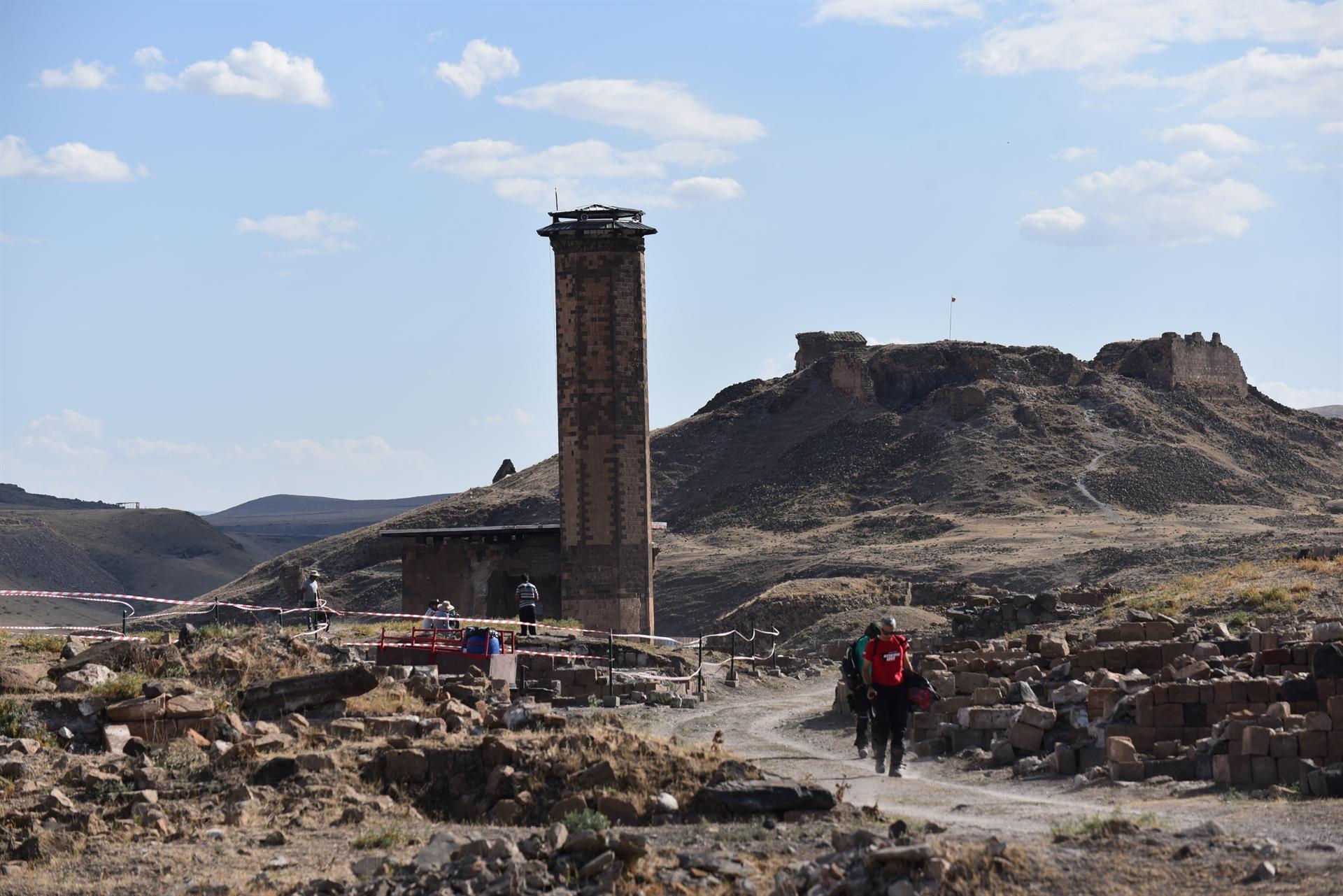
Within the scope of excavations this year, works have been initiated in the Ani Ruins, located on the Turkey-Armenia border, at four different points in order to unearth the underground history.
Lying in the middle of two deep narrow gorges of the Kars’ Arpaçay district, Ani was ruled by the Bagrats between 884-1045 and the Byzantines between 1045-1064 and later was conquered by the Seljuk Sultan Alparslan on Aug. 16, 1064, becoming a Turkish land.
Christians and Muslims lived in the past side by side in Ani Ruins, which was established on an area of approximately 100 hectares and where dozens of civilizations lived along with Turks throughout history.
For this reason, Ani, which is also called the “world city,” “cradle of civilizations,” “one thousand churches” and “the city with 40 gates,” includes religious buildings such as mosques, churches and cathedrals, each of which has a different beauty and historical value, as well as priceless structures and cultural treasures.
This season, excavations are being carried out at four different points in Ani, which is of particular importance as it is the first entrance gate from the Caucasus to Anatolia.
Speaking to the state-run Anadolu Agency, Kafkas University academic Muhammet Arslan, who is also the head of excavations, said that art historians, archaeologists, architects and restorers from 12 different universities are working in the excavations in Ani.
“We are carrying out the excavations with a large team of 35 people, including scientists and students. This year’s work is ongoing in six different areas: Excavations at four different points, bazaar conservation and finding restoration in two different areas. Excavations were concentrated on the areas where the Seljuk bath, Seljuk bazaar and Seljuk residences are located. We are also working to protect the artifacts we have unearthed and are carrying out conservation work in the Seljuk residences and bazaars,” he said.
Stating that the excavations are being carried out at the same time in the Seljuk cemetery, bazaar, residences and bath in Ani, Arslan said, “ Cultural treasures and findings obtained from the excavation sites are restored under the leadership of scientists in our excavation house in Ani and have been added to the museum inventory.”